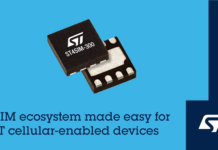
The world around us is moving towards pervasive connectivity, and as a result, any connected device can be a potential Point of Sale (PoS). This is exactly what the new initiative by IBM and Visa intends to accomplish, by combining “the business of the Internet of Things with the technology of the Internet of Things.” As IBM and Visa look to monetize Internet of Things (IoT) devices, here’s how they could benefit from the collaboration while driving the IoT technology closer to customer use for conducting commerce.
“Worldwide spending on the Internet of Things (IoT) is forecast to reach $1.29 trillion in 2020,” according to IDC estimates. Cisco Systems, Inc. (CSCO), an active participant in the IoT business, estimates that “Internet of Everything (IoE) creates $14.4 trillion in Value at Stake — the combination of increased revenues and lower costs that is created or will migrate among companies and industries from 2013 to 2022.”
The figures above represent the huge potential that the Internet of Things offers and has led to companies as varied as industrial infrastructure, networking, enterprise systems, telecoms, and cloud computing, and more, to enter this space and offer IoT platforms in slight variations. AT&T, Cisco, Amazon, Ericsson, General Electric, Huawei, Salesforce.com, IBM and Vodafone are some of the major players in this area.
Now, in a first of its kind of collaboration, IBM (IBM) and Visa (V) would enable quick and secure payment for businesses for any device connected to the Internet of Things (IoT) enabled with Visa. With the multiple opportunities that the collaboration will enable, IBM takes a big leap in its IoT platform offering.
“This combination of IBM’s industry leading IoT technologies with Visa payment services, signifies the next defining moment in commerce by allowing payments on any connected object, with new levels of simplicity and convenience for everyone” said Harriet Green, general manager, IBM Watson IoT.
“With the power of Watson’s cognitive technologies and IBM’s leadership in IoT and security, they are the ideal partner to help us deliver secure payments to ‘virtually anywhere’ and on the enormous scale of the IoT,” said Jim McCarthy, executive vice president, innovation and strategic partnerships, Visa.
The partnership combines IBM’s Watson IoT platform with Visa’s tokenization technology (that replaces the number of a card with a digital token) which would allow businesses to infuse secure payments using Visa Token Service across their product lines using IBM’s Watson IoT platform via IBM Cloud.
There are multiple estimates related to the number of connected devices; Ericsson forecasts a total of 28 billion connected devices by 2021, Gartner’s estimate is at 20.8 billion by 2020 while IHS predicts the IoT market grow to 30.7 billion devices in 2020 and 75.4 billion in 2025. Overall, with the huge projected number of connected devices, Visa and IBM would be instrumental in supporting business and payment transactions on billions of commerce-based IoT such as connected cars, wearables, clothing and home appliances.
The partnership opens an interface between Visa’s 3 billion consumers globally and IBM’s Watson IoT Platform which is used by more than 6,000 clients, who are further helping customers connect to millions of devices. Visa dominated 70.3% of the debit card and 47.4% of the credit card market in the U.S. (based on purchase volume in 2015). Its closest competitor MasterCard Incorporation (MA) is also eyeing IoT. In October, General Motors and IBM announced the auto industry’s first cognitive mobility platform – OnStar Go – backed by MasterCard for payments.
Final Word
The collaboration between IBM and Visa won’t just push monetization of IoT devices, it will also enable customized commerce experiences by making recommendations based on the need, usage and reference pattern of customers. If such advanced mechanisms are coupled with adequate cybersecurity protections, businesses and individuals will have unique payment experiences in the times to come. The whole ecosystem of paying for anything will change dramatically and it won’t be long before your running shoes will tell you that it’s time for you to get a new pair.


















